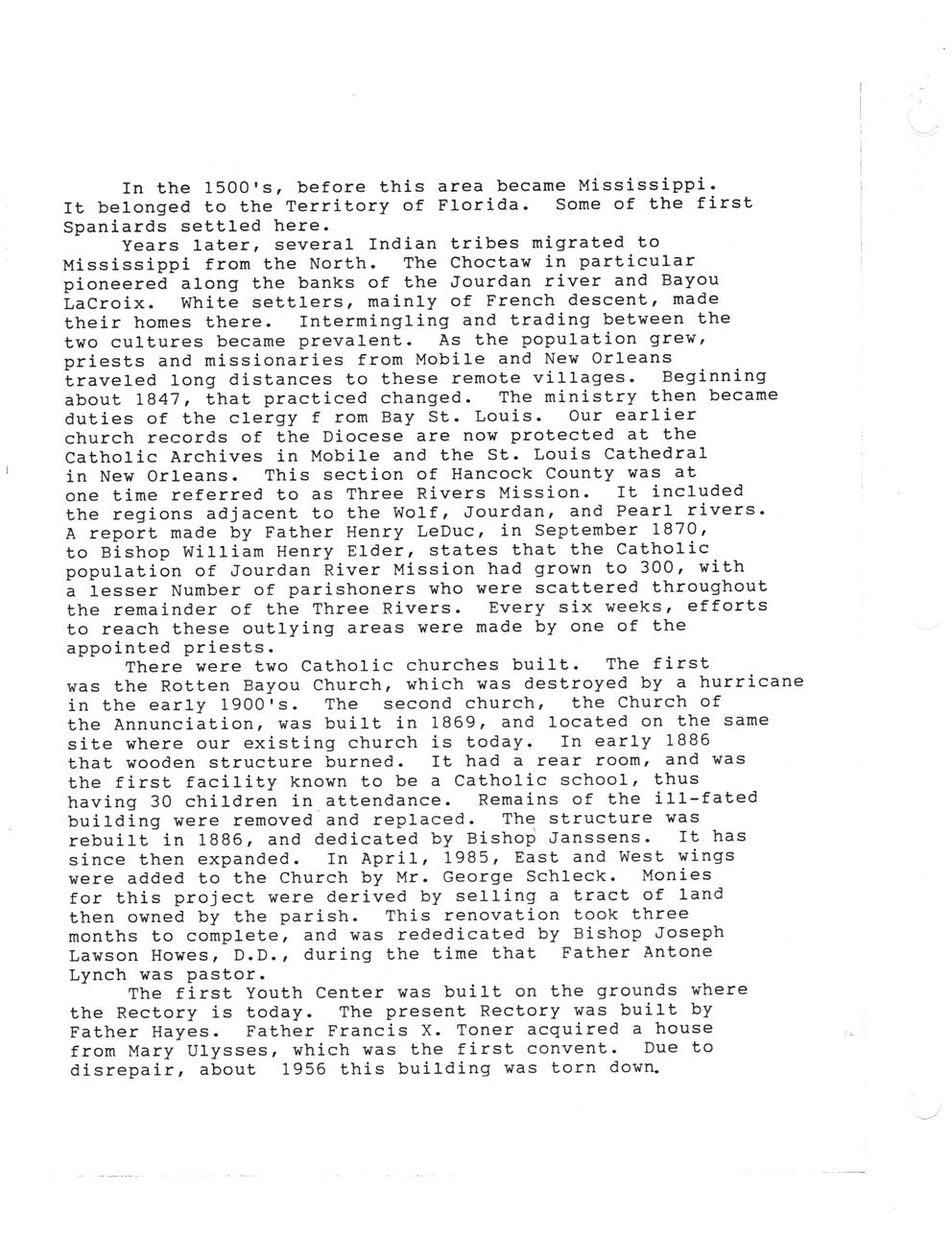This text was obtained via automated optical character recognition.
It has not been edited and may therefore contain several errors.
In the 1500's, before this area became Mississippi. It belonged to the Territory of Florida. Some of the first Spaniards settled here. Years later, several Indian tribes migrated to Mississippi from the North. The Choctaw in particular pioneered along the banks of the Jourdan river and Bayou LaCroix. White settlers, mainly of French descent, made their homes there. Intermingling and trading between the two cultures became prevalent. As the population grew, priests and missionaries from Mobile and New Orleans traveled long distances to these remote villages. Beginning about 1847, that practiced changed. The ministry then became duties of the clergy f rom Bay St. Louis. Our earlier church records of the Diocese are now protected at the Catholic Archives in Mobile and the St. Louis Cathedral in New Orleans. This section of Hancock County was at one time referred to as Three Rivers Mission. It included the regions adjacent to the Wolf, Jourdan, and Pearl rivers. A report made by Father Henry LeDuc, in September 1870, to Bishop William Henry Elder, states that the Catholic population of Jourdan River Mission had grown to 300, with a lesser Number of parishoners who were scattered throughout the remainder of the Three Rivers. Every six weeks, efforts to reach these outlying areas were made by one of the appointed priests. There were two Catholic churches built. The first was the Rotten Bayou Church, which was destroyed by a hurricane in the early 1900's. The second church, the Church of the Annunciation, was built in 1869, and located on the same site where our existing church is today. In early 1886 that wooden structure burned. It had a rear room, and was the first facility known to be a Catholic school, thus having 30 children in attendance. Remains of the ill-fated building were removed and replaced. The structure was rebuilt in 1886, and dedicated by Bishop Janssens. It has since then expanded. In April, 1985, East and West wings were added to the Church by Mr. George Schleck. Monies for this project were derived by selling a tract of land then owned by the parish. This renovation took three months to complete, and was rededicated by Bishop Joseph Lawson Howes, D.D., during the time that Father Antone Lynch was pastor. The first Youth Center was built on the grounds where the Rectory is today. The present Rectory was built by Father Hayes. Father Francis X. Toner acquired a house from Mary Ulysses, which was the first convent. Due to disrepair, about 1956 this building was torn down.

Kiln History Document (018)